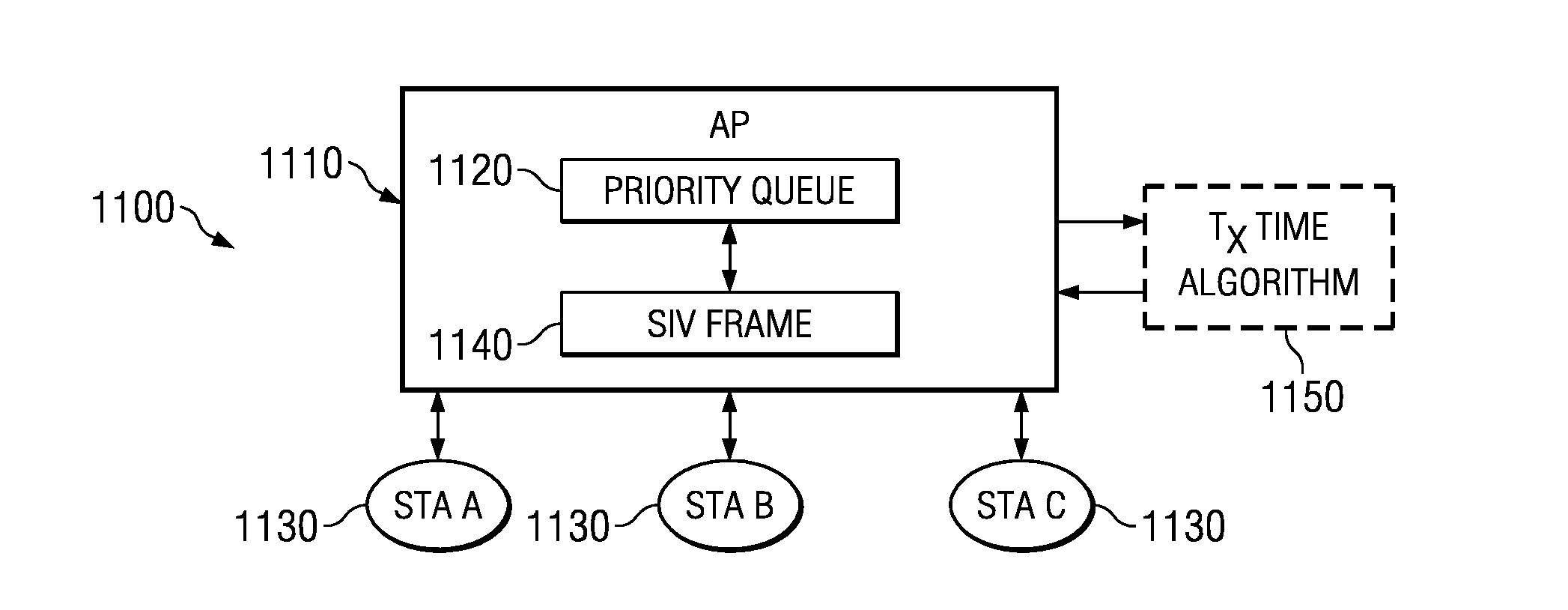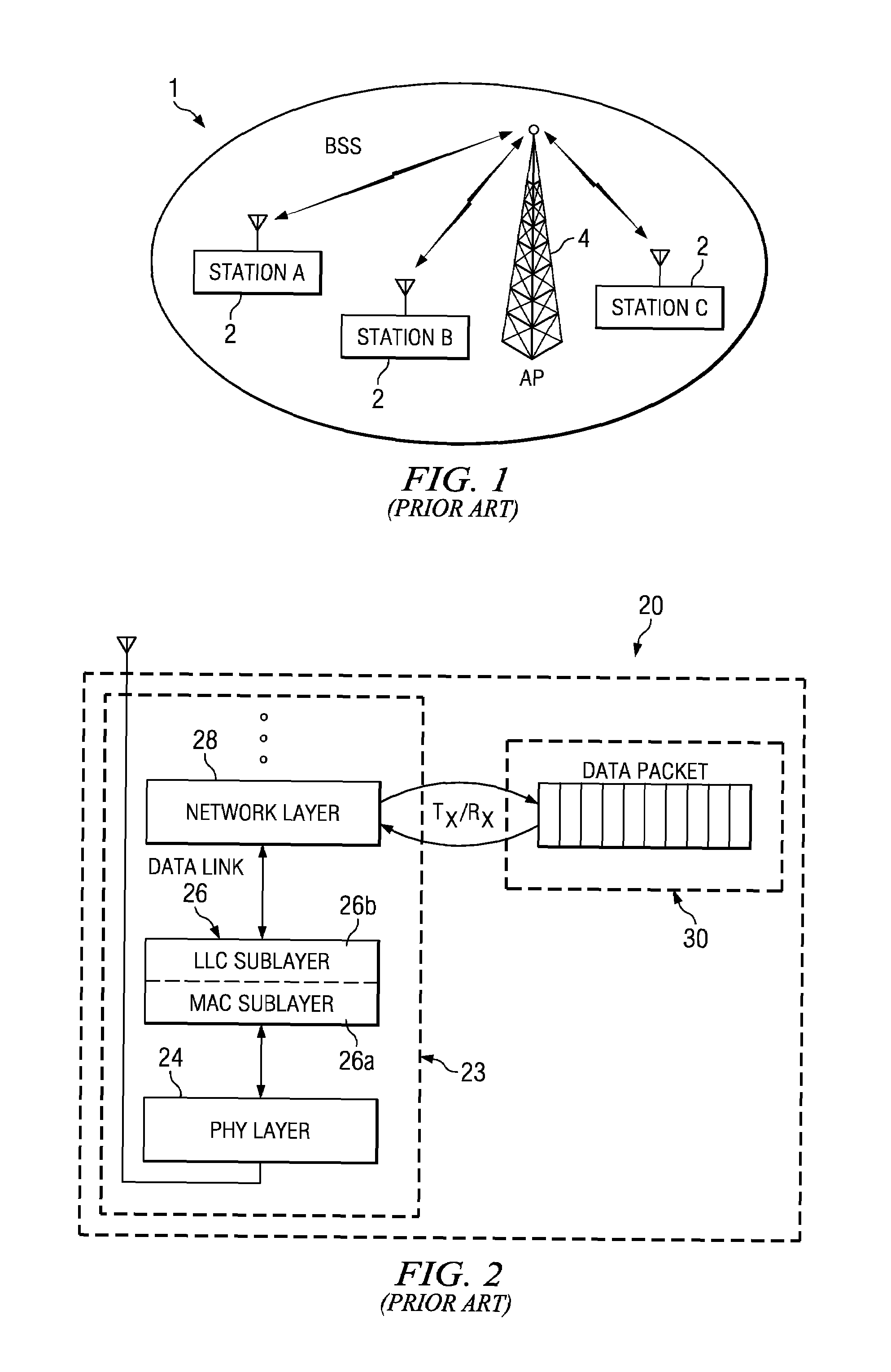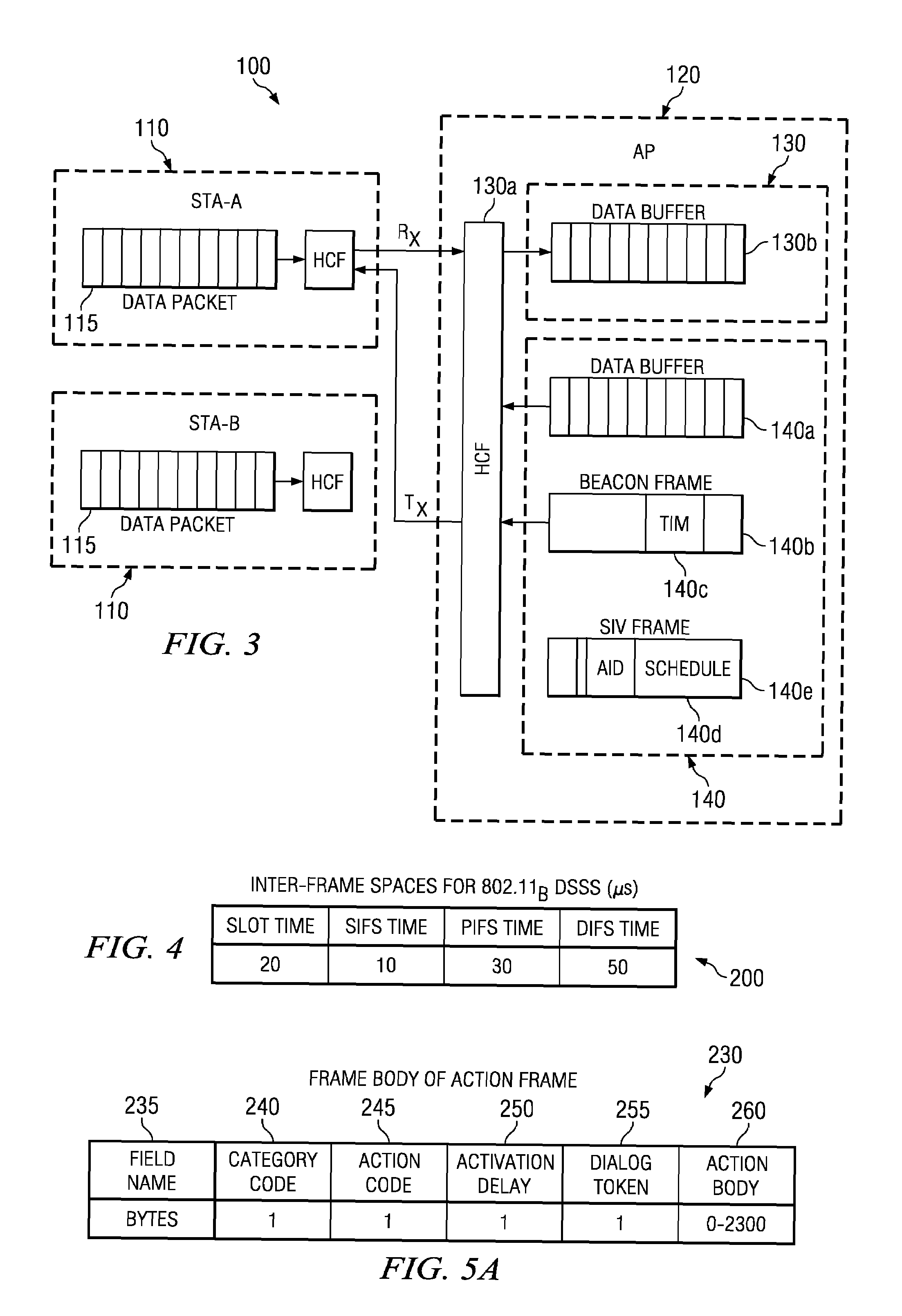System and method for prioritizing data transmission and transmitting scheduled wake-up times to network stations based on downlink transmission duration
a data transmission and network station technology, applied in the field of wireless networks, can solve the problems of inability to stream data in a contiguous fashion, inability to prioritize data transmission, so as to minimize time in channel contention, save power, and minimize the effect of tim
- Summary
- Abstract
- Description
- Claims
- Application Information
AI Technical Summary
Benefits of technology
Problems solved by technology
Method used
Image
Examples
Embodiment Construction
[0051]The present invention will now be described with reference to the attached drawings, wherein like reference numerals are used to refer to like elements throughout. The invention relates to a hierarchical scheduling architecture as a power savings mechanism in a wireless network in which a transmission time calculation and prioritization algorithm is utilized in association with a schedule information vector SIV frame and protocol. In order to better appreciate one or more features of the invention, several exemplary implementations of the power saving system, the associated SIV frame, timing diagrams for the same, and a power saving method is hereinafter illustrated and described with respect to the following figures.
[0052]The inventive aspects of the SIV protocol and associated FIGS. 3-7 will be initially presented, followed by those of the optimal scheduler based on the transmission time calculation and transmission prioritizing algorithm of the present invention and FIGS. 8...
PUM
 Login to View More
Login to View More Abstract
Description
Claims
Application Information
 Login to View More
Login to View More - R&D
- Intellectual Property
- Life Sciences
- Materials
- Tech Scout
- Unparalleled Data Quality
- Higher Quality Content
- 60% Fewer Hallucinations
Browse by: Latest US Patents, China's latest patents, Technical Efficacy Thesaurus, Application Domain, Technology Topic, Popular Technical Reports.
© 2025 PatSnap. All rights reserved.Legal|Privacy policy|Modern Slavery Act Transparency Statement|Sitemap|About US| Contact US: help@patsnap.com



